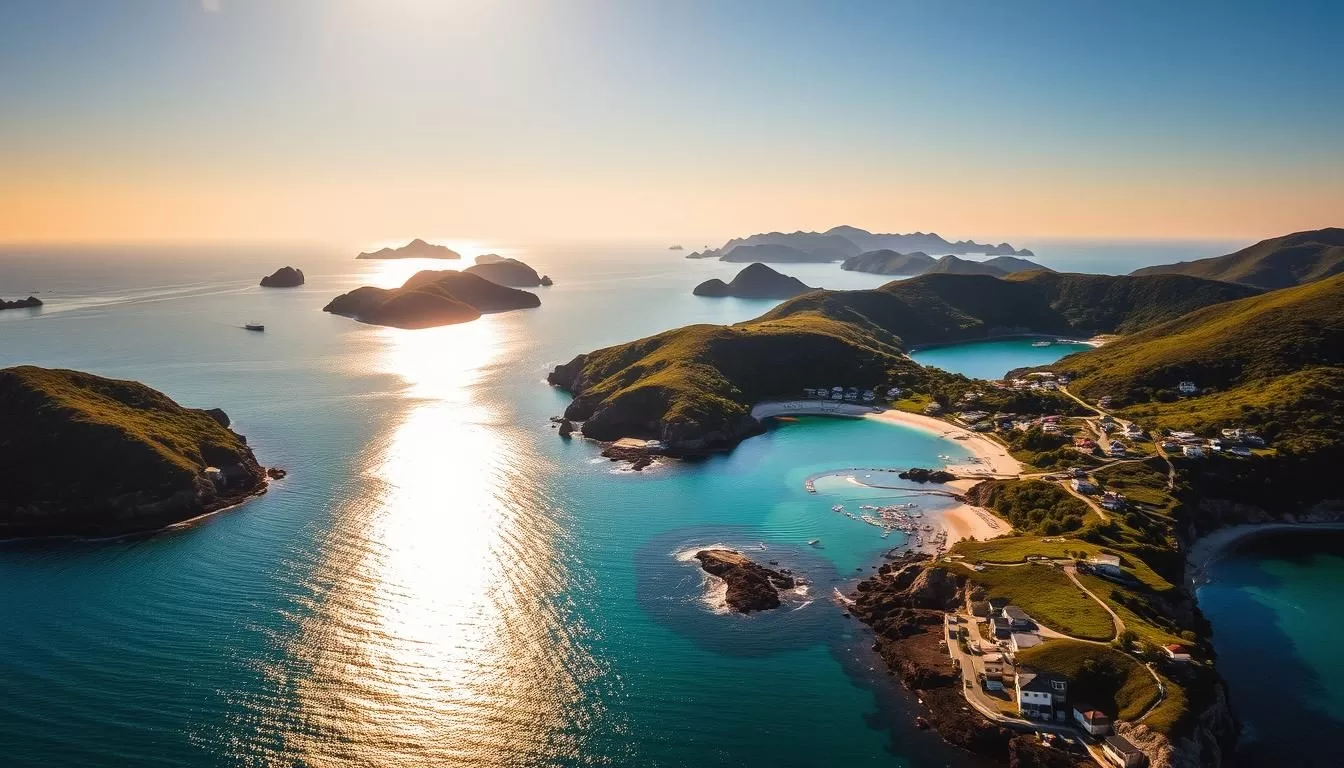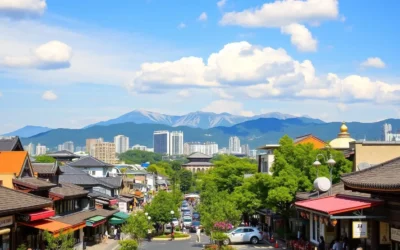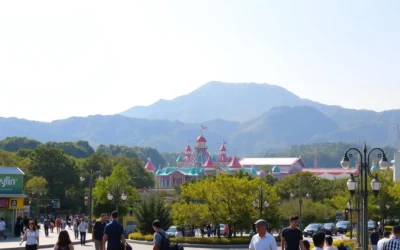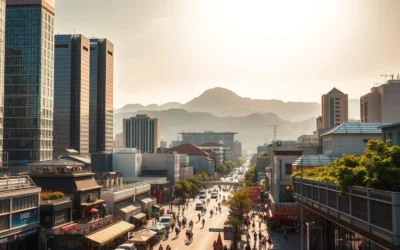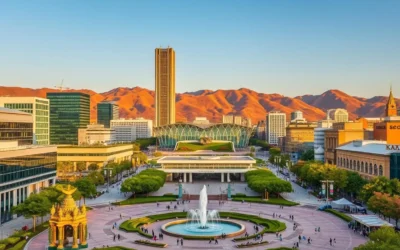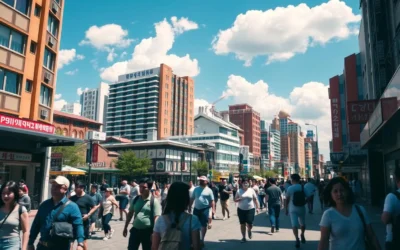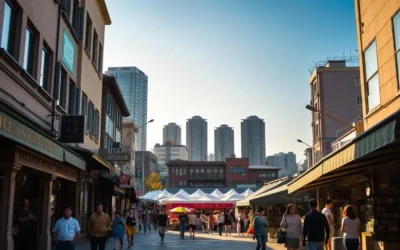Are you ready to experience the authentic charm of South Korea? Look no further than South Jeolla Province, a hidden gem that offers a unique blend of natural beauty and cultural heritage. This enchanting region is characterized by its rugged coastlines, lush green fields, and numerous islands waiting to be explored.
As you plan your trip to this captivating part of the country, you’ll discover the essence of Korean culture in its most genuine form. Visit traditional villages like the famous Jeonju Hanok Village, and immerse yourself in the local way of life. With its unspoiled landscapes and rich history, South Jeolla Province is an ideal destination for travelers seeking an off-the-beaten-path experience.
Embark on a journey through this incredible region and uncover its many wonders.
Discovering South Jeolla Province: Korea’s Hidden Gem
For those seeking an unspoiled Korean experience, South Jeolla Province is a hidden gem waiting to be explored. As you venture into this southwestern region of Korea, you’ll discover a land that has preserved its traditional charm over time, offering a glimpse into the country’s rich cultural heritage.
South Jeolla Province stands out as one of Korea’s most authentic regions, where the rhythm of traditional life remains largely unchanged. The province is particularly breathtaking in spring when the countryside bursts into vibrant colors, making it a perfect time to visit.
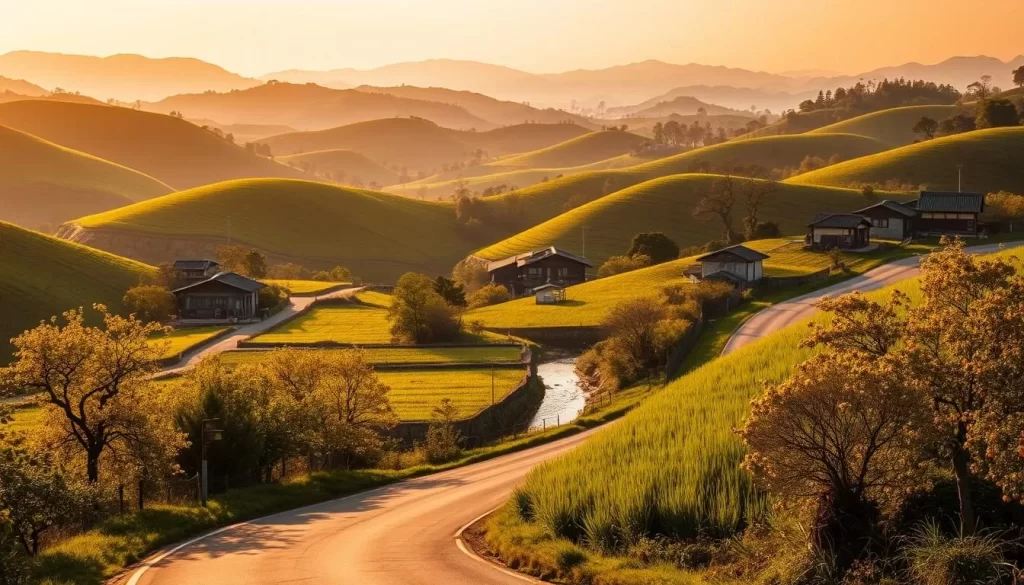
The Essence of Authentic Korea
The essence of authentic Korea can be found in the daily life and landscapes of South Jeolla Province. The region earned its name as the “breadbasket of Korea” due to its fertile lands that have been cultivated for centuries, producing some of the country‘s finest tea and agricultural products. Visitors can enjoy the local food culture, which is renowned for its generous side dishes, known as “banchan,” showcasing the region’s agricultural bounty.
Unlike more developed areas around Seoul or Jeju Island, South Jeolla maintains its rural character while still providing comfortable ways to explore its cultural treasures. It’s a true culinary home for food enthusiasts, where the flavors and aromas of traditional Korean cuisine come alive.
A Brief History of Jeollanam-do
South Jeolla Province, also known as Jeollanam-do, has a rich history that dates back centuries. As the birthplace of the Joseon Dynasty that ruled South Korea for over 500 years, the region holds immense historical significance that shapes the country‘s national identity to this day. Despite facing economic challenges over the years, the cityes of South Jeolla have preserved their cultural heritage while gradually embracing modernization in their own unique way.
The historical significance of Jeollanam-do is a testament to its role in shaping One Korea‘s identity. The region’s history and culture are deeply intertwined with the broader narrative of Korea, making it an essential destination for anyone looking to understand the name and spirit of the country.
Natural Wonders of South Jeolla Province
South Jeolla Province boasts an unparalleled natural landscape, combining the beauty of its coastline with the grandeur of its mountains, making it a highlight of any trip to South Korea. The region’s diverse nature reserves and landscapes offer a unique experience for visitors.
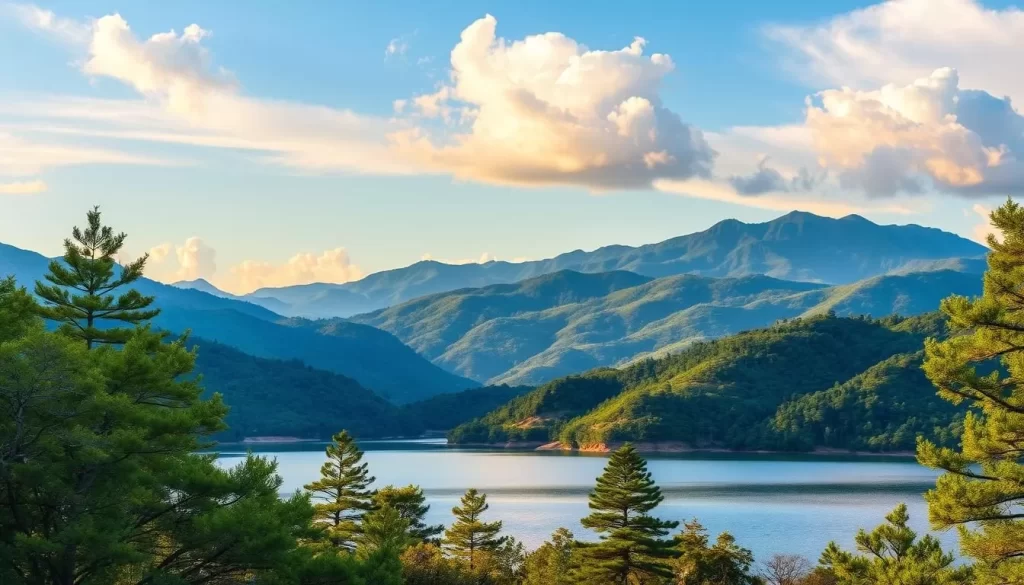
Breathtaking Coastal Landscapes
The coastline of South Jeolla Province is dotted with thousands of islands, creating a maritime playground that is one of the country’s best-kept secrets. Many of these islands are accessible by regular ferry services, making them perfect for island-hopping adventures. The coastal areas are not only beautiful but also home to traditional village settlements, including smaller versions of the hanok village style.
Rolling Hills and Mountain Vistas
Inland, the landscape transforms into rolling hills and majestic mountains, providing dramatic backdrops for traditional villages. The mountain ranges of South Jeolla offer hiking opportunities for all skill levels, from gentle nature walks to challenging summit climbs with panoramic views. Many of these natural wonders are easily accessible by train from major city centers, making them convenient day-trip destinations.
| Location | Main Attraction | Accessibility |
|---|---|---|
| Coastal Areas | Thousands of Islands | Ferry Services |
| Inland Regions | Rolling Hills and Mountains | Train from Major Cities |
| National Parks | Pristine Nature Reserves | Easily Accessible by Train |
The province is also home to several national park areas, protecting pristine nature reserves and showcasing South Korea’s commitment to environmental conservation. Visitors can enjoy the natural beauty without the crowds, unlike more developed tourist areas.
Boseong Green Tea Plantations
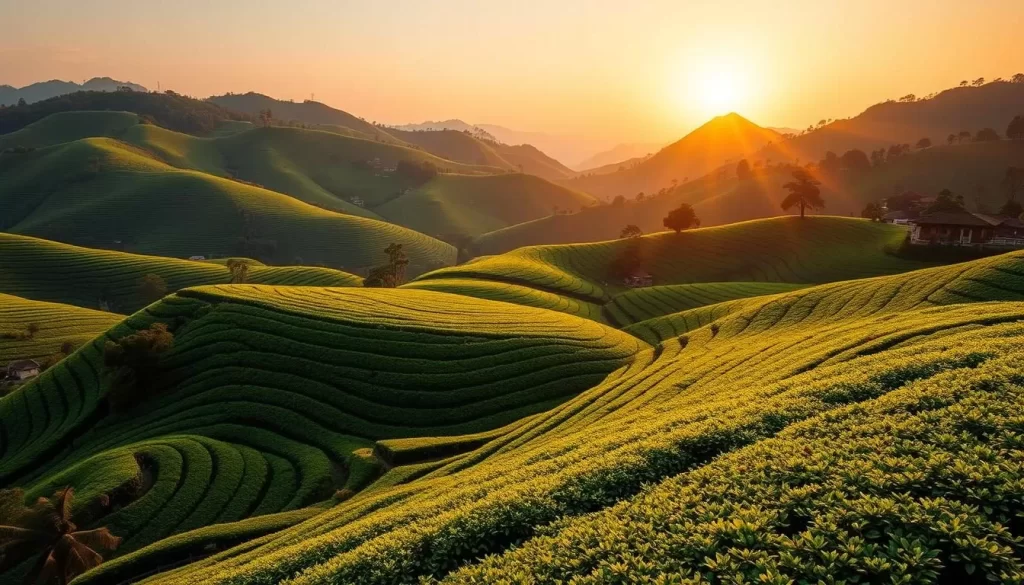
Boseong Green Tea Plantations offer a tranquil escape into nature’s splendor. As you wander through the lush landscapes, you’ll find yourself surrounded by the soothing ambiance of tea trees swaying gently in the breeze. The town of Boseong, situated midway between Yeosu and Mokpo, is famous for its tea plantations that create a stunning landscape, particularly photogenic during the golden hour.
Exploring the Emerald Terraces
The meticulously maintained rows of tea trees stretch across rolling hills, creating a patchwork of green that has become one of the country’s most iconic agricultural landscapes. You can explore the plantations in various ways, from guided tours that explain the cultivation process to self-guided walks along the scenic pathways between the tea fields. This is a great way to experience the beauty of the tea plantations and learn about the tea production process.
Green Tea Culinary Experiences
The city of Boseong has embraced its identity as South Korea’s tea capital, offering unique culinary experiences where green tea is incorporated into everything from ice cream to savory dishes. Local restaurants serve innovative dishes like green tea bibimbap and green tea chicken, showcasing creative ways to incorporate this healthy ingredient into traditional Korean cuisine. At one of the on-site restaurants, you’ll find a variety of dishes featuring pork from pigs raised on a green tea diet, as well as green tea ice cream and snacks.
Visiting Boseong Green Tea Plantations is a great way to spend your time, immersing yourself in the natural beauty and rich cultural heritage of the area. Whether you’re looking to relax or explore, Boseong has something to offer, making it a must-visit destination in South Korea.
Suncheon Bay Wetland Reserve

The Suncheon Bay Wetland Reserve stands out as a premier destination for those seeking an immersive natural experience in South Korea. As you visit this pristine park, you’ll be greeted by Korea’s largest colony of reeds, which stand taller than the average person, creating a breathtaking landscape.
Reed Fields and Migratory Birds
The reserve is home to an expansive reed field that changes with the seasons, providing spectacular views from multiple vantage points. As you explore this area, you’ll have the opportunity to observe over 140 species of migratory birds, including the Oriental White Stork and black-faced spoonbill, making it a part of your trip you won’t soon forget.
Yongsan Observatory Views
For a panoramic view of the Suncheon Bay Wetland Reserve, hike up to the Yongsan Observatory. The S-shaped waterway winding through the wetlands creates a mesmerizing vista that’s considered one of the most photographed in the country. The observatory offers a unique perspective on the reserve’s natural beauty, making it a highlight of your visit to this national park-like destination.
As you plan your trip to Jeollanam-do, consider including the Suncheon Bay Wetland Reserve in your itinerary. The city of Suncheon has developed excellent facilities for visitors, ensuring that your experience is both enjoyable and comfortable. With its rich diversity of plant and life, the reserve is an example of South Korea’s commitment to preserving its natural ecosystems.
Traditional Culture in Jeonju Hanok Village
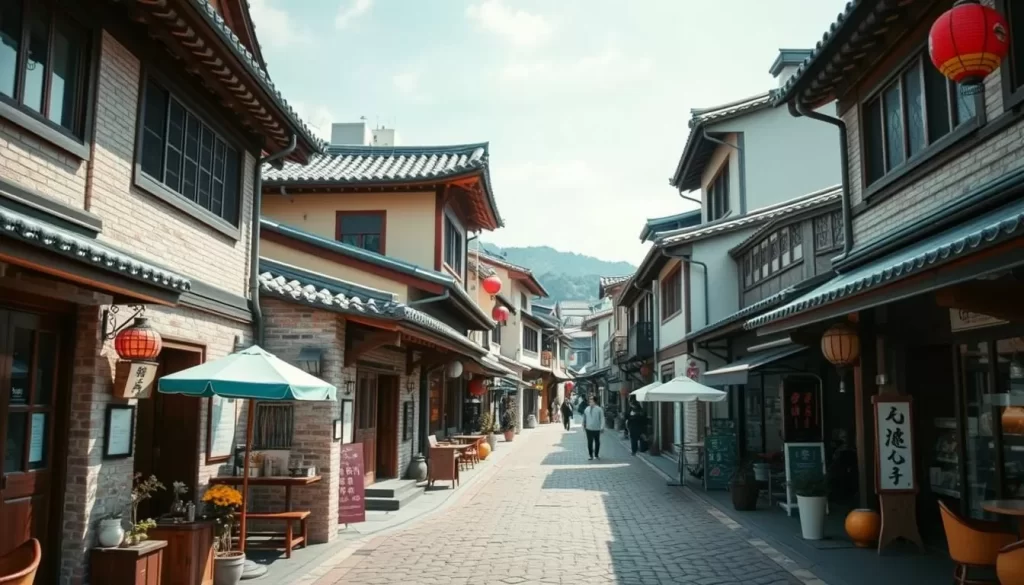
As you step into Jeonju Hanok Village, you’re transported to a world where traditional Korea comes alive. This village is not just a collection of old houses; it’s a living, breathing community that showcases the country’s rich cultural heritage.
Exploring Korea’s Largest Traditional Village
Jeonju Hanok Village is one of the largest and best-preserved traditional village complexes in South Korea. With over 800 traditional Korean houses, or hanok, it offers visitors an immersive experience of Korea’s architectural heritage. Unlike other attractions, this village remains a functioning part of the city, where traditional houses are still occupied by residents, creating an authentic atmosphere.
The village is a cultural time capsule from the Joseon Dynasty era, featuring distinctive curved roofs and elegant wooden structures. As you wander through the narrow lanes, you’ll discover a region rich in history and culture.
Cultural Activities and Performances
Visitors to Jeonju Hanok Village can enjoy various shows and performances, including pansori, or Korean opera, which regularly takes place at different locations throughout the village. You may also participate in traditional activities such as lantern-making or calligraphy, enhancing your cultural experience.
The village is divided into distinct sections, each offering a different way to engage with Korean heritage. From museums and craft workshops to traditional tea houses and restaurants, there’s something for everyone in this vibrant village, showcasing the best of South Korea’s cultural treasures.
Maisan Provincial Park and Tapsa Temple

If you’re looking for a unique natural landscape in South Korea, Maisan Provincial Park is a must-visit destination. The park is renowned for its twin peaks that resemble horse ears, standing out dramatically against the country’s typically uniform mountain ranges.
The Iconic “Horse Ear” Mountains
The “horse-ear” mountains are the main attraction of Maisan Provincial Park, offering breathtaking views and a unique hiking experience. You can reach the park by taking a bus or taxi from Jinan, a small town near Jeonju. Upon arrival, you’ll find the main entrance north of the park, which includes restaurants and accommodations.
The hike between the horses’ ears involves steep flights of stairs, which can be challenging but rewarding. Although the peaks were closed for regeneration at the time of writing, the scenic views from the scalp area are still accessible and provide a great opportunity to appreciate the park’s natural beauty.
Tapsa’s Remarkable Stone Pagodas
Nestled between the mountains, Tapsa Temple is a remarkable site featuring stone pagodas built without any adhesive by a single monk. This display of human ingenuity in harmony with nature is a testament to the cultural richness of the area. Visitors can explore the temple and its surroundings, taking in the serene atmosphere and appreciating the unique stone structures.
The combination of Maisan Provincial Park’s natural landscapes and Tapsa Temple’s cultural significance makes for a comprehensive and enriching trip experience. You can also visit nearby traditional tea plantations and hanok villages to further enhance your cultural and natural exploration of this distinctive region in South Korea.
Island Hopping Adventures
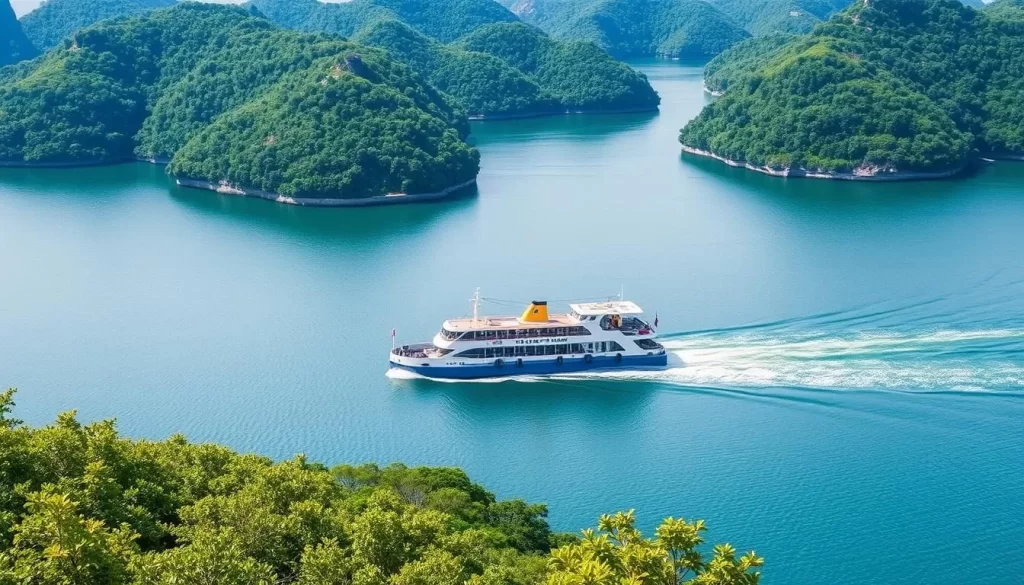
With thousands of islands scattered along its coast, South Jeolla Province is a paradise for island hoppers. You’ll find that the best way to enjoy this area is to pick a ferry at random and simply go with the flow.
South Jeolla Province is home to over 2,000 islands, making it the perfect destination for island hopping adventures where you’ll find everything from popular resorts to untouched natural paradises. The time to visit these islands is during the warmer months when ferry services run more frequently and the natural landscapes are at their most vibrant.
Exploring Hongdo and Geomundo Islands
Hongdo and Geomundo islands stand out as premier destinations, offering spectacular views and traditional fishing villages that have maintained their authentic character over time. When you visit these islands, you’ll experience the unique cultural traditions that have evolved in isolation over many years.
The Purple Island Experience
The Purple Island, or Banwoldo, has transformed itself into a unique attraction by embracing a purple theme throughout its landscape. The island is famous for its lavender fields that bloom spectacularly in spring and early summer, making it a great choice for those looking for a unique experience.
When you’re on the island, you’ll find that it’s not just about the scenery; the island offers a chance to stay in hanok village accommodations, allowing you to experience traditional Korean architecture while enjoying modern comforts.
As you explore these islands, you’ll discover that each one has its own specialty products and cuisine, often centered around the freshest seafood harvested from the surrounding waters that the locals call home. We highly recommend planning at least 2-3 days for island exploration to fully appreciate the diverse landscapes and unhurried pace of life that characterizes these coastal communities in South Korea.
South Jeolla Province, South Korea: Best Things to Do for Food Lovers
As you explore South Jeolla Province, you’ll discover a culinary paradise that showcases Korea’s rich gastronomic heritage. The region is particularly famous for its authentic culinary experiences, making it an essential part of any trip to South Korea.
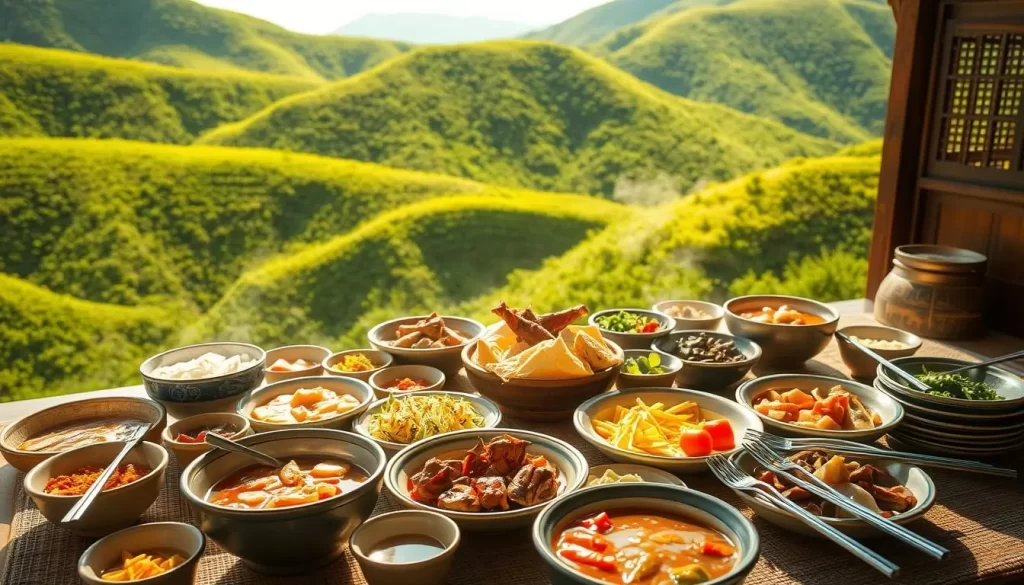
Jeonju Bibimbap and Regional Specialties
One of the standout dishes from this region is Jeonju bibimbap, a local take on one of Korea’s favorite dishes. This colorful arrangement of vegetables, meat, and egg over rice is served with more generous side dishes than you’ll typically find elsewhere in the country. The Jeollanese people take immense pride in their culinary traditions, and their love for food is evident in every meal.
- Experience the authentic flavors of Jeonju bibimbap at local restaurants.
- Explore the various houses turned into family-run restaurants in coastal village communities.
- Discover unique tea blends and traditional serving rituals at specialty tea houses.
Fresh Seafood Experiences
The coastal regions of South Jeolla Province offer an array of fresh seafood preparations that highlight the bounty of the surrounding waters. You can enjoy these dishes in traditional houses converted into family-run restaurants, providing a unique experience. Many of these establishments maintain gardens where they grow their own ingredients, reflecting the region’s deep commitment to freshness and agricultural traditions.
During your trip to South Jeolla Province, be sure to visit the local food markets in every city to sample regional specialties and interact with producers who take immense pride in their products. You can also participate in cooking classes to learn the techniques behind beloved Korean dishes and understand the philosophy that shapes this celebrated cuisine.
Yeosu’s Coastal Attractions

Yeosu, a gem on Korea’s southern coast, offers an unforgettable maritime experience. As a coastal city in South Jeolla Province, Yeosu rivals the attractions found on Jeju Island but with fewer crowds, making it an ideal destination for those seeking a serene yet exciting getaway.
Maritime Cable Car Adventures
The Yeosu Maritime Cable Car is a breathtaking way to experience the coastline, offering unobstructed views of the azure waters and scattered islands below. As the first cable car in Korea to connect Dolsan Island and the mainland, it provides a unique perspective on the region’s natural beauty.
As you ride the cable car, you’ll enjoy spectacular views of Yeosu’s Dodo Sea and Dolsan Bridge, an example of how South Korea has developed its coastal areas while preserving natural beauty. The incorporation of green spaces and trees along the waterfront adds to the city’s charm.
Parasailing and Water Activities
For adventure seekers, parasailing above Yeosu’s waters offers a thrilling experience, providing a unique perspective of the city’s coastline and the surrounding archipelago at a time when the waters are calmest. You can also explore the traditional island life on Dolsan Island, with its preserved fishing villages and seafood markets serving the day’s fresh catch.
In the evening, Yeosu’s bridges and harbor come alive with spectacular light shows, creating a memorable view that highlights the city’s modern architecture against its natural setting. The nearby hanok village offers traditional accommodations with modern amenities, adding a cultural dimension to your seaside vacation.
Gwangju: Art and History
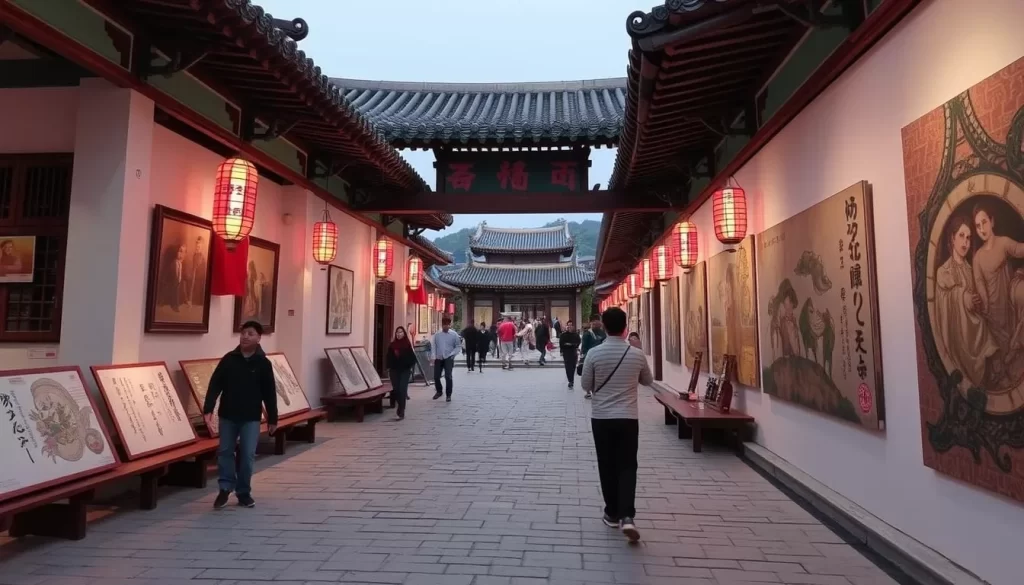
As the most populous city in South Jeolla Province, Gwangju is a vibrant hub of artistic innovation and historical significance. You can experience the city’s dynamic culture firsthand by visiting its numerous art galleries and historical sites.
Art Street and the Biennale
Gwangju’s Art Street is the epicenter of the city’s art scene, featuring a myriad of galleries, studios, and cafes that are easily accessible. You can explore the works of both established and emerging artists, gaining insight into the city’s thriving cultural landscape. The Gwangju Biennale, held every two years, transforms the city into an international art destination, showcasing contemporary works that often engage with social and political themes relevant to South Korea and beyond.
Historical Sites and Memorials
Gwangju is also home to significant historical sites, including those that commemorate the 1980 Gwangju Uprising. The May 18 Memorial is a particularly poignant location, providing a moving testimony to the city’s pivotal role in South Korea’s democratic development. You can also visit the former home and tea plantation of the renowned artist Uijae, now preserved as a museum, offering insights into traditional Korean painting techniques and artistic philosophy amidst the beautiful nature and vistas of Mudeungsan.
Unique Experiences in Sinan County
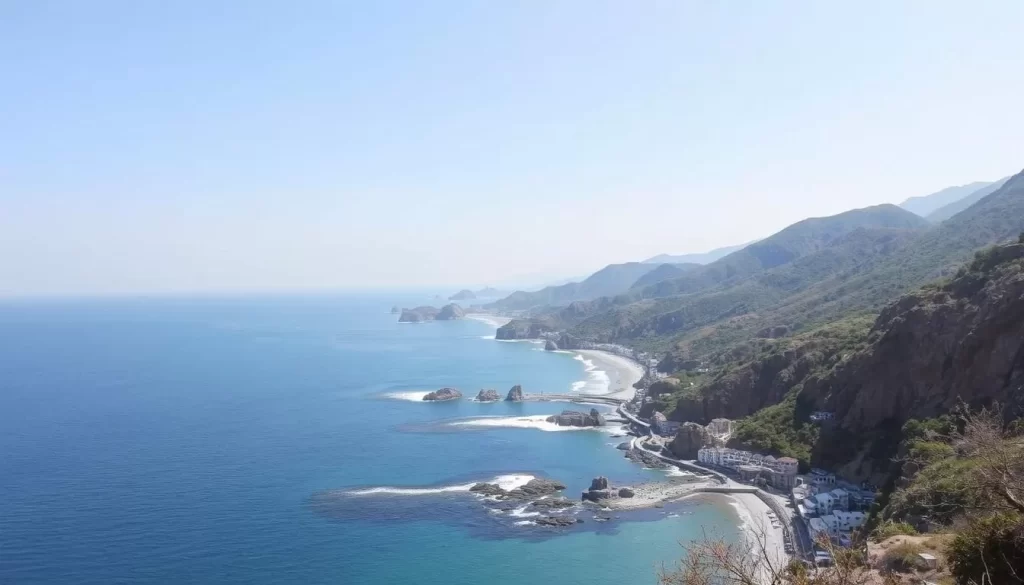
Sinan County is a treasure trove of unique experiences, from horse riding on its longest beach to relaxing in salt baths. As you explore this coastal region in South Korea, you’ll discover a blend of traditional and modern attractions that make it a must-visit destination.
Horse Riding on Daegwang Beach
One of the most exciting experiences in Sinan County is horse riding along Daegwang Beach, the longest beach in South Korea. Stretching over 12 kilometers, this beach offers a unique way to enjoy the coastal views. As you ride your horse along the shore, you’ll find the experience both exhilarating and serene.
Salt Bath Healing Experiences
For a relaxing experience, visit the Taepyeong Salt Farm Maritime Healing Spa, where you can enjoy therapeutic salt bath treatments. The spa uses locally harvested sea salt to provide innovative wellness treatments, offering various ways to rejuvenate in a natural setting. This is a great way to unwind and enjoy the healing properties of salt.
In Sinan County, you’ll also find numerous islands connected by bridges and ferries, creating a maritime playground. The best time to visit is during sunset hours when the coastal views are at their most spectacular. Many visitors combine their Sinan County exploration with stays in nearby hanok village accommodations, blending traditional architecture with coastal experiences. The city of Mokpo serves as the gateway to Sinan County, offering excellent transportation connections.
Naganeupseong Walled Town
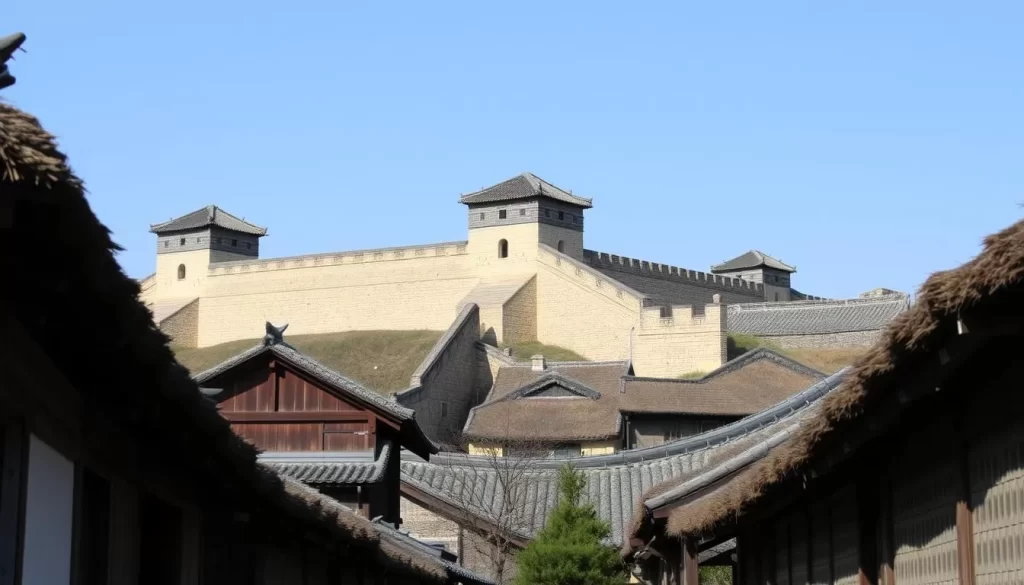
As you enter Naganeupseong Walled Town, you’re not just visiting a historical site; you’re experiencing a way of life that’s centuries old. This well-preserved fortress village in South Korea offers a unique glimpse into the country’s past, with residents continuing to live within its ancient walls.
Living History in a Fortress Village
Naganeupseong Walled Town represents one of Korea’s most complete and authentic living history sites, where traditional life continues within ancient fortress walls dating back to the Joseon Dynasty. The circular fortress design takes its name from the Korean word “nagan” meaning “comfortable” and “eupseong” meaning “walled town,” reflecting its original purpose as both a defensive structure and administrative center.
Visitors can walk along the well-preserved earthen walls that encircle the village, offering panoramic views of both the traditional settlement and the surrounding countryside, making them a popular part of any trip to the site.
Traditional Crafts and Customs
Unlike many historical village reconstructions in South Korea, Naganeupseong features actual houses where residents maintain traditional customs and practices as part of their daily life. You can experience traditional craft demonstrations and cultural shows that highlight skills passed down through generations, including pottery making, weaving, and traditional music performances.
The traditional thatched-roof houses within the fortress demonstrate authentic architectural techniques that have remained largely unchanged for centuries, offering insights into historical building practices. Seasonal festivals celebrate agricultural cycles and historical events, offering you opportunities to participate in traditional customs and experience authentic cultural things to do.
Practical Travel Tips for South Jeolla Province
As you plan your journey to South Jeolla Province, here are some practical travel tips to make your trip more enjoyable. South Jeolla Province is a treasure trove of natural beauty, cultural heritage, and culinary delights, and being prepared will enhance your experience.
Best Time to Visit
The best time to visit South Jeolla Province is during spring (April-May) when cherry blossoms and tea plantations are at their most vibrant, or autumn (September-October) when the trees display spectacular fall colors. Unlike Jeju Island, which experiences heavy tourism year-round, South Jeolla Province has distinct seasonal variations that can significantly impact your journey and the experiences available.
- Spring brings fresh mountain vegetables and is ideal for hiking and outdoor activities.
- Autumn features the region’s celebrated persimmons and mushrooms, making it perfect for food enthusiasts.
Getting Around the Region
The region is well-connected by train networks, with the KTX high-speed rail providing convenient access from Seoul to major cities like Gwangju, from where local transportation options fan out. When planning your visit, consider that many smaller islands have limited ferry services during winter months or during inclement weather.
| Transportation Mode | Route | Frequency |
|---|---|---|
| KTX Train | Seoul to Gwangju | Frequent |
| Ferry Services | Mainland to Islands | Limited, especially in winter |
| Local Buses | Within cities and towns | Regular |
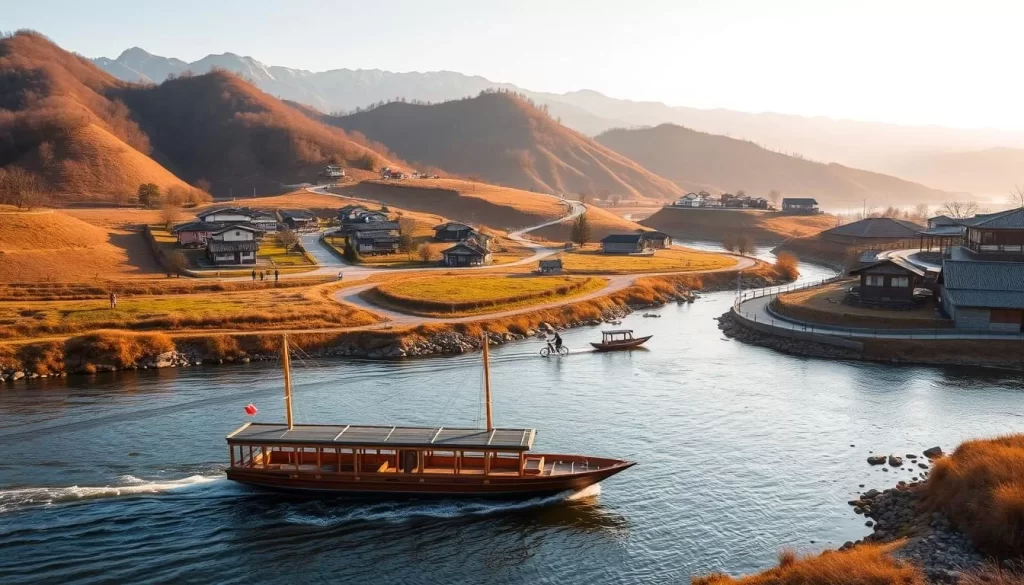
Accommodation Options
Accommodation options range from luxury hotels in larger cities to traditional hanok village stays that offer authentic cultural experiences with varying levels of modern amenities. You can choose to stay in a city like Gwangju for easy access to public transport and amenities or opt for a more serene experience in rural areas.
- Luxury hotels in cities like Gwangju offer modern amenities and comfort.
- Traditional hanok village stays provide a unique cultural experience.
By considering these practical travel tips, you can make the most of your visit to South Jeolla Province and enjoy a memorable journey through this beautiful region of South Korea.
Conclusion: Why South Jeolla Province Should Be Your Next Korean Adventure
With its unique blend of natural beauty, cultural richness, and culinary delights, South Jeolla Province is an ideal destination for your next Korean adventure. You’ll find that this province offers an authentic Korean experience that combines the best of nature, culture, and cuisine without the overwhelming crowds found in more popular destinations.
The region’s commitment to environmental preservation is evident in its well-maintained national park areas and protected coastal zones, where native trees and ecosystems thrive. This makes it an attractive choice for travelers seeking an immersive experience in South Korea. Whether you’re exploring the rolling hills, visiting traditional villages, or enjoying the local seafood, you’ll discover a perfect balance of preserved traditions and modern comforts.
Food lovers will discover a culinary paradise that showcases the depth and diversity of Korean cuisine, with regional specialties that inspire a lasting love for the country’s gastronomic traditions. The warm hospitality of local residents creates meaningful connections that often become the most cherished memories of a visit to this special part of South Korea. We highly recommend allowing at least a week to explore the province properly, giving yourself time to venture beyond the major city centers and discover the hidden gems that make this region truly special.
As you plan your trip, you’ll find that South Jeolla Province deserves a prominent place on your travel list for its authentic and diverse offerings. The region’s beauty, both natural and cultural, is sure to leave a lasting impression. With its unique attractions and experiences, South Jeolla Province is a relatively undiscovered treasure that rewards visitors with genuine experiences and natural beauty that rival any in Asia.
In conclusion, South Jeolla Province is a hidden gem that offers a rich and varied travel experience. With its blend of natural beauty, cultural heritage, and culinary delights, it’s an ideal destination for your next adventure in Korea.
The above is subject to change.
Check back often to TRAVEL.COM for the latest travel tips and deals.
